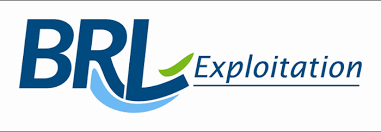Newsletter subscription
BRL (Compagnie nationale de la région du Bas Rhône et du Languedoc) implemented and operates a set of hydraulic structures, providing resources for drinking water in towns and irrigation over an area of 130,000 hectares. The East perimeter, extending from the Rhône river up to Montpellier, is served by a 12 km entrance channel ; at its extremity is the Pichegu pumping station (one of the largest in Europe) with a capacity of 75m3/s.
It supplies two canals, 80 km and 26 km long, with 55 pumping stations and boosters pressurizing the irrigation network. The East center also operates 3 drinking water treatment stations, serving part of the coastal and rural area in the Gard region, and several treatment plants.
Renovation of remote management installations with Topkapi SCADA software
A decade ago, BRL renovated its remote management facilities by installing a TOPKAPI supervisor and PERAX remote management controllers. Considering the size of the structures and their geographical dispersion, reliability of data transmission networks was crucial.
Communication with the central station computer and remotely managed equipment relied mainly on the switched telephone network (PSTN) and, for the largest sites, on point to point leased lines.
We thought interesting to use this example to see a few years later the evolution in data transmission systems.
The table below summarises the characteristics of the application:
| Years | 1997 | 2007 |
|---|---|---|
| No. of stations and remote controlled automatons | 55 | 150 |
| No. of supervisory positions for driving | 6 | 16 |
| Number of serial ports managed simultaneously on the server (including Ethernet offset) | 9 | 20* |
| No. of variables | 4000 | 14 000 |
*Including 3 for on-call management in voice synthesis.
Most information is centralized on a server station located at the main pumping station in Bellegarde, in the Gard area.
The main evolutions in the communication infrastructures were:
- Generalization of the TCP-IP protocol, particularly on private serial links
- Use of DSL for other links
Where communication private links were usually point to point between two applications, for example for a Modbus master-slave link, switching these links to the TCP-IP protocol allows using the same media for several applications:
- Supervisor/controller communication: use of protocols based on Modbus IP or equivalent to replace former serial communication.
- Client/server dialogue for operating stations in supervision: using TCP-IP natively and with little bandwidth demand, the Topkapi client station is well suited to this type of architecture.
- Remote maintenance of equipment: remote programming console for controllers, program download, remote setting of RTUs, remote takeover of computers, etc.
- Remote serial ports for all applications requiring a serial link (1).
Certain applications, such as remote maintenance, can require large data transfers, consuming a fair part of the bandwidth, to the detriment of other applications. But as their use is rather punctual, the drawbacks are limited in time, and tolerable.
Temporary discomfort is indeed very little when avoiding for example a 400km round trip between Nîmes and Perpignan for a few minutes intervention. All these uses also apply to DSL links. These are gradually substituting to regular telephone links, providing the following at a low cost (about 30€ / month):
- A permanent link of the real time type
- Data flow rates exceeding modem links
Traditional telephone links are however maintained in parallel of the DSL link, as they allow making use of backup connections should the DSL service be unavailable. For data exchanges between SCADA software and controllers, TOPKAPI controls switching between both media, and there is no impact on processing and configuration of the application’s basic variables.
The use of data time-stamped at the source also prevents losing historical information should the DSL link drop.
Concrete benefits of using Topkapi supervision software
Concrete benefits for the users of these new architectures are:
- Possible access to all supervision data from any point in the network,
- Flexibility of architectures: thanks to their low bandwidth consumption, TOPKAPI client stations can be easily added without changing the infrastructure,
- Fast intervention and time saved for operating and maintenance operators.
(1) The principle of remote serial port consists in using the TCP-IP network media to convey data of a serial link, and address this data to a serial port located next to the equipment.



